In January 2020, Colorado’s Roaring Fork Valley — a serenely beautiful, 50-mile stretch along the Roaring Fork River from Aspen to Glenwood Springs — received an accolade that no other part of the state has. The International Mountain Biking Association (IMBA) named the valley a Gold-Level Ride Center, recognizing the more than 300 miles of biking trails in the area and the community that supports them as among the world’s best.
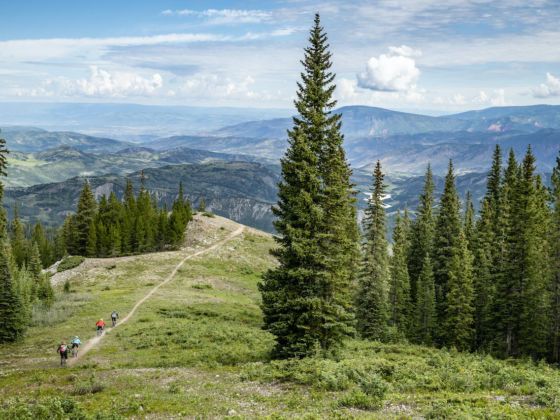
Aspen Snowmass Is Officially One of Best Mountain Bike Spots in the World
What this means for the avid mountain biker is that the Roaring Fork Valley, and particularly its upper portion including Aspen and Snowmass, is among the best places in the country for a summer or fall excursion. Of course, covering 300 miles of trail on a single trip is nearly impossible. Start up-valley in Aspen Snowmass. Aspen offers easy access to numerous trail systems right from town and is the starting (or ending) point to the acclaimed Rio Grande Trail, a 42-mile behemoth that connects the upper valley to the down-valley towns of Basalt, Carbondale, and Glenwood Springs.
Snowmass Village is the heart of the valley’s mountain biking scene and the perfect place to base yourself in the area. Our Aspen City Guide offers in-depth information on getting to and from the area. Once you’re here, here’s how to make the most of it.
Spend a day at the Snowmass Bike Park
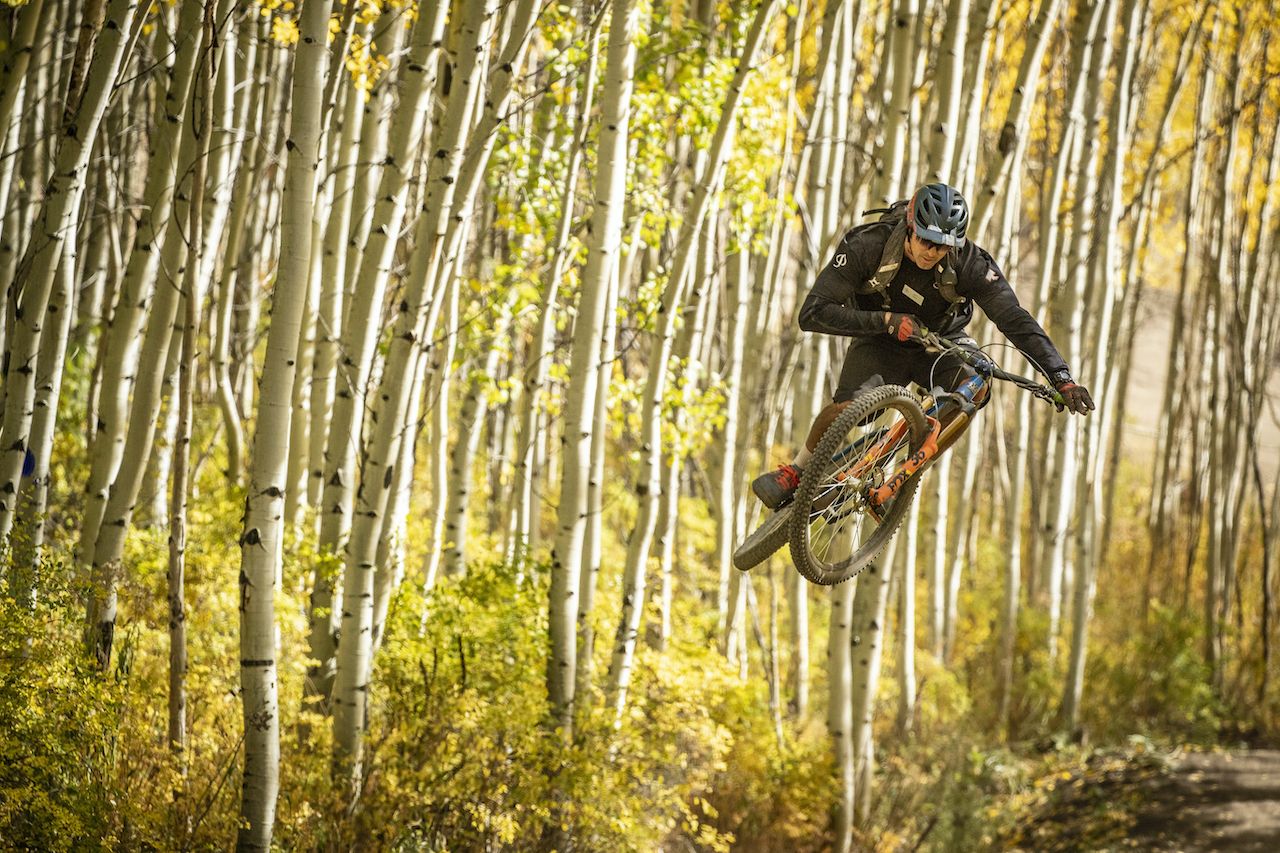
Photo: Matt Power/Aspen Snowmass
In awarding the valley its ranked “Ride Center” status, IMBA took into consideration not only the quality and diversity of trails on offer — from lift-accessed downhill to cross-country to steep ascents and singletrack — but the accessibility of each and the scene that surrounds them. Snowmass Village, a resort community adjacent to Aspen, serves as the hub of the community’s downhill bike culture. It has everything you need for a vacation, save for the booming nightlife that Aspen is known for (though the dining, bars, and clubs are a quick bus ride away).
The Snowmass Bike Park is the stuff of hard-helmeted legend, drawing downhillers from around the world to its 3,000 feet of vertical riding. On a north-facing slope, the dirt tracks of the bike park wind through rich forests of aspen and pine and overlook the towering Elk Mountains, home of the 14,131-foot Capitol Peak, the most treacherous of Colorado’s famed “14ers.” There’s a trail for nearly everyone here, beginning with the entry-level Fanny Hill Skills Loop that flows from the Snowmass Mall down to the base village and the kids’ skills park just above the gondola base. The entire park is impeccably manicured, with flowy banked turns and on the intermediate trails, options to ride around most jumps and features for those still working up the courage to go big.
Trails are categorized as green, blue, and black, similar to ski trails, with green being easiest and black trails designed for top-tier riders. Keep in mind that in downhill biking, blue trails are much more difficult than green trails, and black trails are for experts only. If it’s your first time riding downhill, or if you need a warm-up, head up the Elk Camp Gondola and ride down the long, flowy Verde trail, the only “easy” trail accessible from either of the two lifts that serve the park. This is the place to get comfortable riding downhill, as it’s acceptable to ride at a slower speed and hone your skills before moving to more challenging routes.

Photo: Matt Power/Aspen Snowmass
For intermediate-level technical riding, try Viking down from the gondola or head up the Elk Camp Chair and down Vapor. These trails feature small and medium hip- and side-jumps and patches of small rocks that are easy to maneuver over, provided you hold decent speed and keep your weight centered. Allow 15 to 20 minutes for each plus the lift up, meaning you could hit both in under an hour. Gargamel and Papa Smurf are short and fast intermediate trails that don’t require technical skills but do take an ability to navigate berms and sharp turns.
Among more experienced riders, the park is best known for Valhalla, a difficult trail just under three miles in length that requires strong jump skills and the skills to maneuver onto and off of elevated wooden bridges at varying pitches. If you’re a true downhill fiend, have a go at the Gonzo trail. Just be prepared to spend as much time in the air as you will on the dirt.
The best way to conclude a day in the Snowmass Bike Park is to head up the Elk Camp Chair and take the 4.5-mile French Press trail, a long but mellow blue ride that winds through high-altitude forest and over more than a few ridges worthy of a photo stop for their expansive views of the lush green Roaring Fork Valley and its surrounding peaks. Take this all the way from top to bottom and park your bike outside Slow Groovin’ BBQ on the pedestrian-only Snowmass Mall for a pint of cold beer and a plate of Hillbilly Nachos.
How to prepare for the Snowmass Bike Park
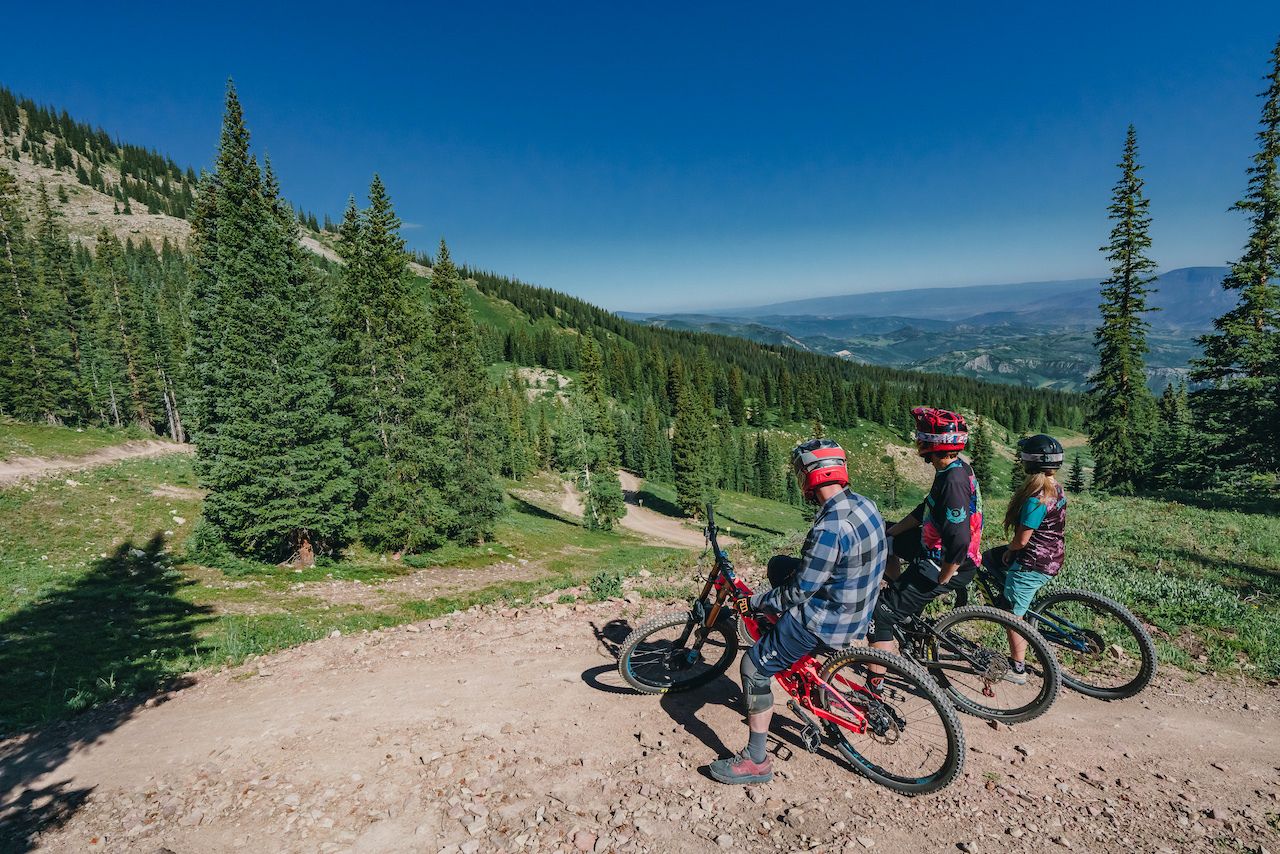
Photo: Tamara Susa/Aspen Snowmass
Downhill riding differs from traditional cross-country mountain biking because the focus is on freeride and technical bike skills rather than covering a certain trail or ascending a peak. It tends to be much faster and less physically strenuous (except for on the wrists, which spend much of the time clamping the breaks). But taking a spill when ripping a downhill trail can be quite painful, and as such, downhill bikes are designed with strong shocks and their bodies are angled in a way that helps riders keep balance when weight tends to naturally shift forward. If you have a decent cross-country mountain bike, it’s possible to ride it on most trails in the bike park as long as you have dual-suspension shocks.
A one-day ticket bought online is $49, with a discount added for a three-day ticket to total $129. Bike rentals are available at Four Mountain Sports in the base village, along with additional gear. You’ll need a helmet, knee pads, and chest and shoulder pads. When boarding the gondola, load your bike inside the car with you. On the chairlift, you’ll attach your bike to the chair in front of you and collect it at the top.
The Elk Park Gondola runs from 10:00 AM to 4:45 PM, and the Elk Park Chairlift, which serves the upper portion of the park, runs until 3:45 PM. The gondola runs later on Tuesdays, closing at dusk with evening-only lift tickets available for $37. If you plan to stay in Snowmass, the Limelight Snowmass is right at the base of the Elk Camp Gondola.
A room here is your best bet for being in the thick of the action. Dining and shops are a quick walk away, with more of each accessible via a quick and free ride up the “Skittles” gondola to the outdoor Snowmass Mall. The hotel’s restaurant offers an incredible breakfast buffet and the surrounding lounge area, whether inside or out, serves a solid apres drink and can double as a coworking space if you need to pop open the laptop to catch up on work. Rooms typically run $200-$350 depending on when you visit, including breakfast, and the hotel offers a special rate for Colorado residents.
For a more wallet-friendly option, try the Pokolodi Lodge. Rooms here start at $99 and are within walking distance of the Snowmass Mall.
Get out for a cross-country ride
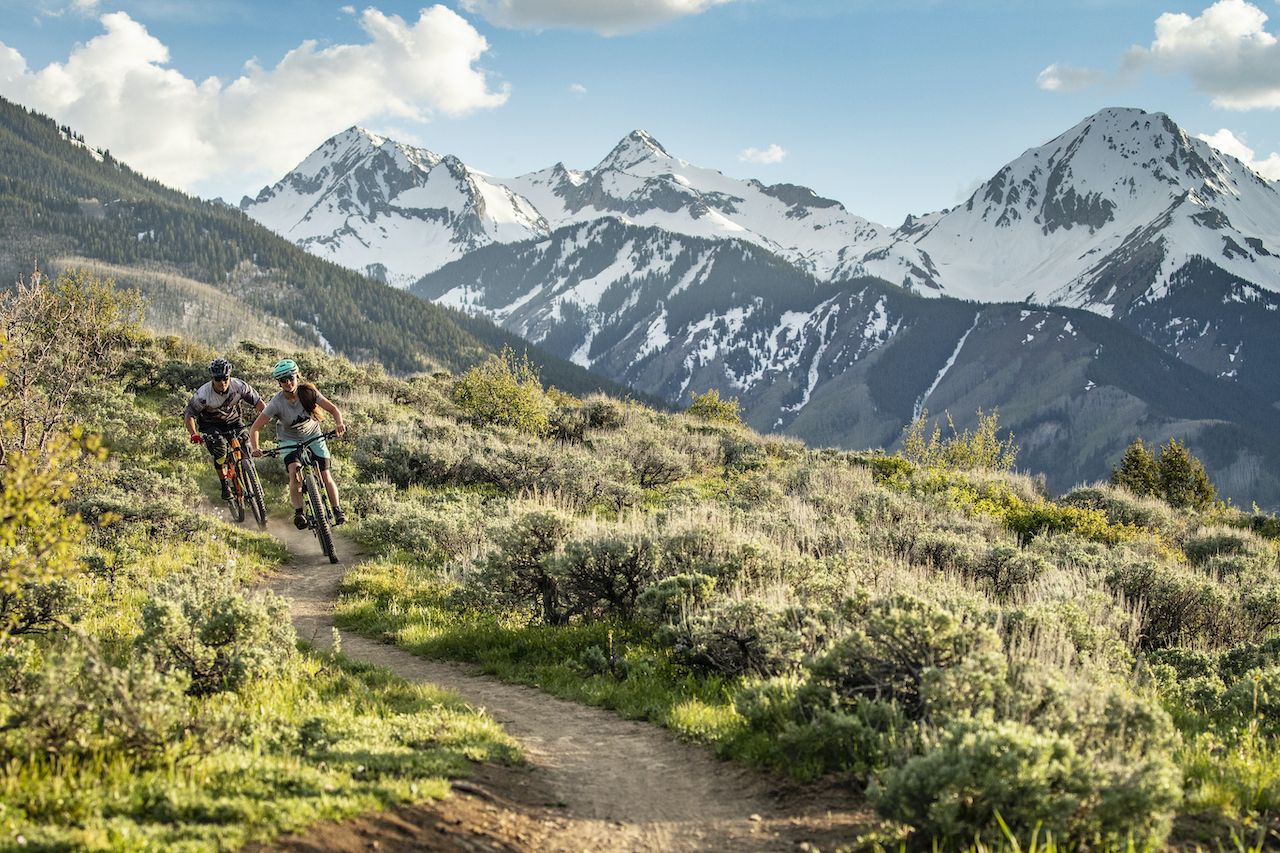
Photo: Matt Power/Aspen Snowmass
The Roaring Fork Valley differs from much of Colorado’s high country in very distinct ways. Aspen is posh and expensive but is also home to a cultural underbelly that includes many of the state’s best mountain athletes — who base themselves here for easy access to places such as Sky Mountain Park, a cross-country trail system accessible from either Aspen or Snowmass. Ride up the uphill-accessible singletrack trails Airline, Cozyline, or Viewline, and then connect with a downhill trail such as the Deadline Descent to complete a loop. Over 18 miles of trail are available with nearly 2,000 feet of vertical. Along the way, you’ll take in 14,000-foot mountains like Snowmass Mountain and Capitol Peak as you pedal between the towns of Aspen and Snowmass Village.
Alternatively but equally accessible from either Aspen or Snowmass, pedal up Buttermilk Mountain and then down a moderately challenging single-track trail via the Buttermilk Bowls Loop. You’ll climb a brutal 2,000 vertical feet, but the descent is more than worth it as you wind across Buttermilk from west to east. At the top, take a reflective photo of yourself on the deck of the Cliffhouse Restaurant, Highland Peak, and Pyramid Peak in the background. Access the uphill trail from the Tiehack parking lot at Buttermilk, and ride down to the base of Buttermilk Mountain for an apres session at Home Team BBQ. Allow up to 90 minutes for the ascent to the top.
Tackle a massive challenge
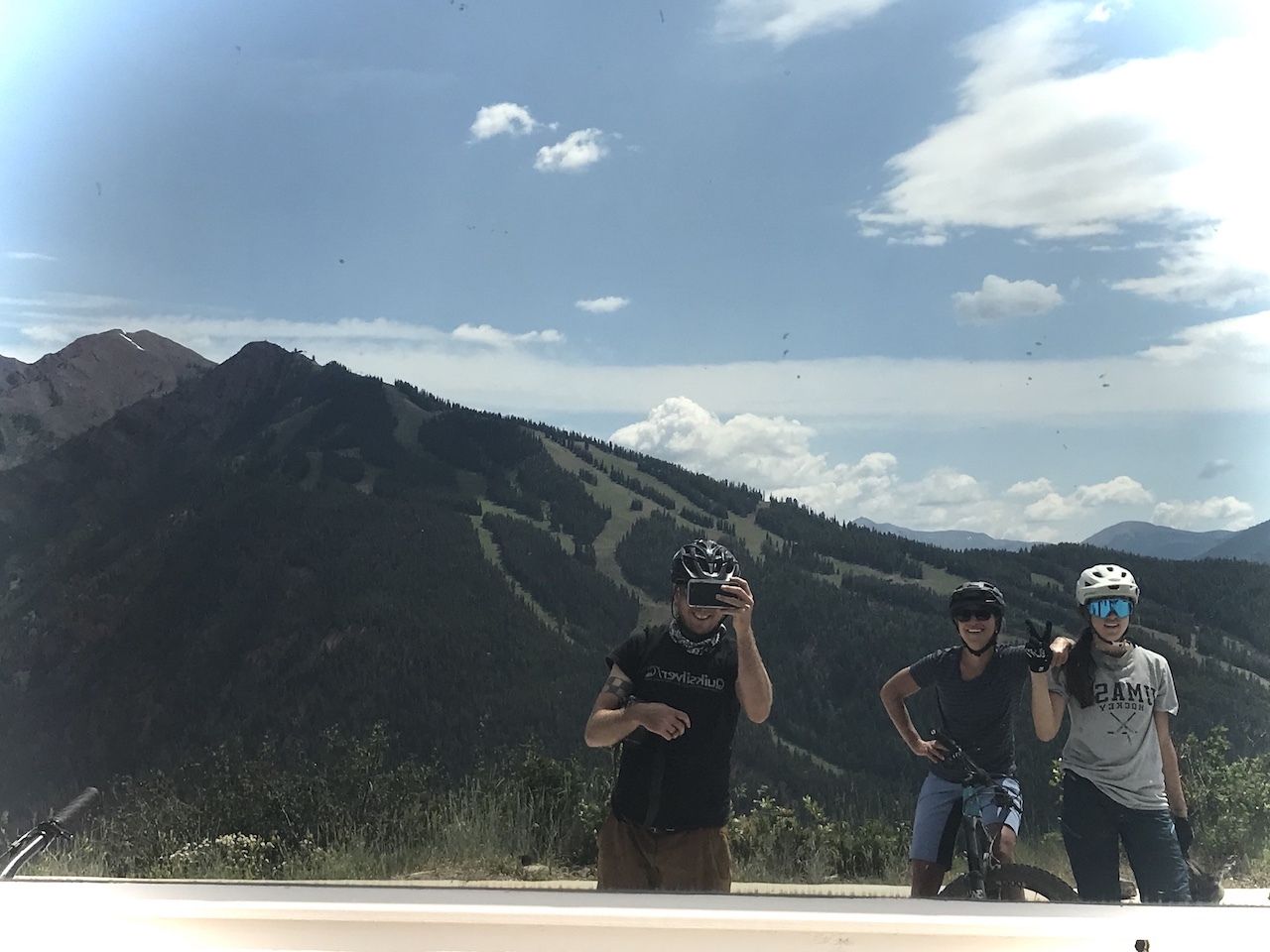
Photo: Tim Wenger
As is the case with most high-altitude trail systems, many of the trails in the Aspen Snowmass area connect to other systems in a seemingly never-ending loop. You could, were you so inclined, ride on forever, but then you’d miss Aspen’s legendary apres scene. Instead, explore the high country with a definitive endpoint by taking on the Smuggler to Sunnyside loop, which ascends Smuggler Mountain on the east side of Aspen for 1,600 feet, crosses over to Red Mountain via a series of fun turns and hops over small rocks and roots, and then climbs up another 1,000 feet to a point known as Four Corners. From there, you’re looking at a rewarding, but technical, downhill ride back to town. Allow a half-day for the ride.
For the ultimate challenge, take on the Power of Four Loop, which encompasses the breadth of Snowmass’ bike trail system, including the legendary cross-country Government Trail. You’ll ascend more than 50 miles in the process but will have a heck of a story to tell over beers at Aspen Tap House afterward. Or just keep on riding and see where the trail takes you.